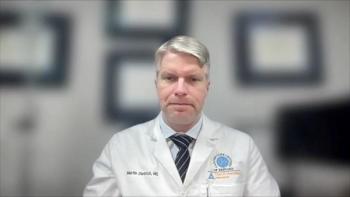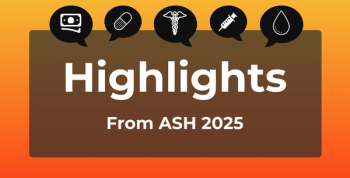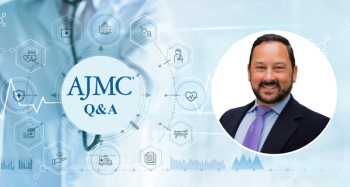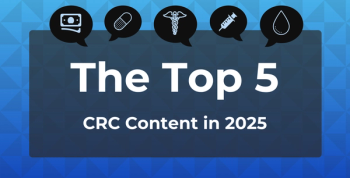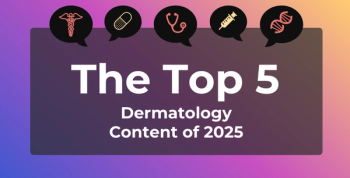
MIGS Offers Multiple Methods of Addressing Glaucoma Early: Christine Funke, MD
Christine Funke, MD, explains minimally invasive glaucoma surgery and what types are available for patients.
Minimally invasive glaucoma surgery (MIGS) offers different ways in which patients can treat their glaucoma. Christine Funke, MD, glaucoma specialist at Barnet Dulaney Perkins Eye Center in Phoenix, Arizona, described these different forms of MIGS and how they can be beneficial to patients.
This transcript has been lightly edited for clarity; captions are auto-generated.
Transcript
What is MIGS and what should doctors and patients know about it?
It's a great question because it's an acronym which means minimally invasive glaucoma surgery. Really, it's an umbrella of many different procedures that we have available, MIGS, I think of more surgically, but also put into the category of interventional glaucoma, we can talk about lasers, injectables, as well as MIGS. When we're talking about this new dogma of how we're treating glaucoma, I think of that spectrum of what's underneath the umbrella of interventional glaucoma or IG.
Specifically, what lasers we have available, the main laser is called SLT, or selective laser trabeculoplasty. We have a newer form of SLT called [direct] SLT. This laser takes less than 3 seconds. Less than 3 seconds and the majority of patients will have a pressure response, and usually for several years. It's really cost effective, simple, and very quick and convenient for patients to do. It's probably one of my favorite go-to first line treatments, and it's repeatable. It's a really, really nice option.
We also are starting to get now injectable pharmaceuticals. And why would we want to do injectable pharmaceuticals? You already can get a drop. Why would do I want an injection in my eye? Well, it's because we're finding 1) the compliance goes away. So the issue of, did I remember my drop? Did I not? [This] is gone. Also, we're tending to find that the medications that are being placed in the eye actually have a healing effect and are working 24 hours a day. We're finding that people are having better pressure response. I'm seeing a lot of my patients who I've been placing eye dose in. My eye dose patients, I tend to see that they just have a bigger response in terms of pressure lowering than those who are on topical drops before surgery. There's something else mechanistically going on that they're benefiting from having 24-hour slow release of medication in the eye, and I hope that this then translates to slowing down a progression of vision loss. And that would be a pretty good assumption to make, because we've seen that, but in other forms of minimally invasives.
Then the third option goes through a large umbrella of minimally invasives, which includes stenting procedures, and then also canal-based procedures, which, in the eye there's a canal, and that canal is kind of what we're working on by either stenting it; we're trying to open it up. I always think about it like cardiology. We're just trying to stent open this area that's not working very well. Then we also can clean it out with what's [called]canaloplasty. Then if those things don't work, we can also actually remove the top layer of the canal and just open the whole thing up. And that's called a goniotomy.
We have all these different procedures that are very effective for the majority of patients and also low risk. When I talk about risks with these procedures, when I talk to patients, it's like cataract surgery, which is an extremely low-risk procedure. Patients are usually doing well within a week, even sometimes quicker, so downtime and recovery time is very minimal, and then also they're getting the benefit of slowing down the progression of their disease. And we have definitely seen that when looking at visual field analysis and comparing the visual fields of those who did or did not have minimally invasives in conjunction with cataract surgery. We're finding that when we intervene, this disease process is slowing down. And that's the whole goal. That is the whole goal of what we do is we want to slow down the progression of this disease. Because we can't stop it, we can't cure it, we can't reverse it. If we can keep this disease young, if we can keep people without vision loss and not losing quality of life because of the disease, or because of the treatments of the disease because there's that discussion as well, then we're winning.
I've just seen the evolution of my practice and how I used to see glaucoma, how I used to see my post-op patients, and now how I see them. The evolution has just massively changed what I talk to patients about, what I care about. I care about quality of life so much more. I care about aesthetics more, I care about dry eye more. Because before it was just keep taking your drops. There's nothing else I can do here, and now it's, "Okay, I have a lot of other things I can do here. Why are you suffering with this problem?" And that's really exciting as a physician, because, again, I feel like I can really help solve a lot of issues that weren't solvable before.
Newsletter
Stay ahead of policy, cost, and value—subscribe to AJMC for expert insights at the intersection of clinical care and health economics.

